The End is The Beginning – My experiences with drugs and finding my life at Narconon Colorado.
It all started in May of 2013 in my condo in Vegas. Ok, it actually “started” sometime in 1990 in California. For our purposes here, I’ll start in 2013, in Las Vegas. I woke up at some, nondescript time, lying on my couch. I found myself unable to move and very thirsty. As I stared up at the ceiling I became increasingly aware of my new found paralysis and began to panic. This gave me the answer to the ages old question- What must that guy in the Metallica One video (the war vet with no arms, legs, sight, hearing, etc.) feel like? Answer- Hell on earth.
 Before I go on, let me back up a bit. You see, I had been on about a week long meth and heroin binge with some so called friends. In the world of getting high, friends are hard to come by so you take what you can get. One guy, I’ll call him Bubba, let me stay at his parents’ house when we decided that some unknown forces were stalking my house and posed immediate personal danger. I stayed there for four days, didn’t sleep, barely ate and did enough speed and tar to fill Marianas Trench. Afterwards, I let Bubba drive us back to my place in my car.
Before I go on, let me back up a bit. You see, I had been on about a week long meth and heroin binge with some so called friends. In the world of getting high, friends are hard to come by so you take what you can get. One guy, I’ll call him Bubba, let me stay at his parents’ house when we decided that some unknown forces were stalking my house and posed immediate personal danger. I stayed there for four days, didn’t sleep, barely ate and did enough speed and tar to fill Marianas Trench. Afterwards, I let Bubba drive us back to my place in my car.
A little background on Bubba. Bubba was, in every sense of the word, a thug. A 36 year old career criminal, white supremacist, addict, sociopath, Bubba was the epitome of someone you NEVER, EVER want to be in your house alone with. So, after an hour or so of staking out my condo to make sure no one was lying in wait, we went inside. Bubba was convinced that someone had been there and insisted on searching high and low (operative word- high) for something? Anything? Hell, I don’t know. I was too tired to care. The last thing I remember was Bubba offering me part of his milkshake.
Blackness.
I have to back up a little more. I had recently been involved with this girl, call her Anna, and her friends, call them psychopaths. They were into all the hottest tweaker, heroin baby crap like fraud, theft, confidence scams, and the like. I don’t know why but I guess they had their allure to someone like me that consumed lots of drugs and didn’t have a job. Anna was especially alluring and sexy to my meth strained eyes so I hung out with these sharks for a few days. Or was that weeks? Anyway, they tried and tried to get one over me and steal everything I owned. They even tried to drug me.
Drug me? Ha, that’s either a misfired joke or the worst exercise in futility ever. I was an expert level drug user/ abuser since 90’ and I had a tolerance form HELL! Let’s see, I had been taking Xanax and other benzodiazepines for about 13 years; been doing meth since 90’; enjoyed “Platinum Card Member” status at the opiate hotel for at least ten years; and I have a good relationship with just about every pharmaceutical out there. Given their resources and what was available to chemically nock me out at the time, I calculate that they would have to spend at least $2000 over their junkie budget to render me unconscious and steal my $600 worth of electronics. That’s’ just dumb. Even for tweakers.
Anyway, I mention this because, after several hours of trying to move while lying there on my couch, it occurred to me that my phone was missing. As soon as I could walk I discovered that my wallet was also gone, along with my MacBook, my Galaxy Tablet and a host of other items including several expensive watches. Eventually I found that everything I had owned that had some value was missing. I flew into a withdrawal fueled toxic psychosis rage and called the police. Then I called my Mom. In retrospect I should have reversed the order of those calls.
The cops came and I explained the situation like a paranoid junkie. This led to me getting to try out a new, shiny pair of hinge cuffs. When I couldn’t answer the cops’ questions like a clear headed person they beat the shit out of me in front of my Mom. After hours of threats of taking me to The Clark County Detention Center, they let me go. Oh yeah, they got a hold of my heroin princess roommate and told her what happened and that I may have done this as an excuse to go into her room and steal her stuff. I had no argument because I was on drugs and couldn’t form logical sentences.
The next day I found out that Anna and her three psychos had come over to party while I was asleep. Anna had woken me up and attempted to seduce me. When that failed, she opted for giving me a high volume GHB cocktail. That explains the memory loss. That explains the paralysis. That explains the theft. Why did this keep happening to me?
This is what you get when you are forced to socialize with the parasites and filth that inhabit the drug world. Looking back at all the so called friends I had during my 20 plus years of getting high has taught me some very hard lessons. One of the most important of these is that everyone you associate with, all your “friends” you have while getting high will stab you in the back, cut out your liver and help your family find the perfect grave to bury you in. They’ll do it with a smile too. Your death means more drugs for them AND they get to keep all the stuff they stole from you.
Maybe I should mention that this sort of thing happens all the time. It’s weird how logic and reality twist when you’re on drugs. There’s a sort of retrograde amnesia/ justification process that leaves the user with the feeling that they are lucky to have survived something like this again. At least they are still alive to smoke this bowl or do this shot. It’s an acceptable loss (everything you own) as long as you can still char broil your consciousness with your drug of choice.
Back then, this shit scared me out of my mind and nearly killed me 100 times over. Back then I couldn’t explain it all in a way that made sense to my family or sober friends. Still, I tried and tried. It wasn’t until that day in my Vegas condo, after the police left, that I finally found the words to say to my Mom that would forever change my life and get me out of that Hell hole.
“Mom, I need help or I’m going to die.”
That evening, at my Moms’ place, she and I found Narconon on the web. Narconon was different for many reasons. First, they had absolutely nothing to do with 12 step programs. Second, it was in Colorado which was a place I’d wanted to go to anyway (not Vegas). Third, the program made sense to both of us. They had a beautiful residential facility in Colorado with good amenities. The program seemed to focus on teaching me how to actually live in this world and how to communicate with everyone in it, including myself. My lack of being able to do these things had built the foundation on which my two decades plus of drug addiction would rest.
I was on a plane in two days.
To med detox, at Narconon.
I had tried rehab before. 12 step, Rational Recovery, etc. Both of those were 30 plus day inpatient services and they worked great, for about a week afterwards. Both times it seems that I left feeling awesome and I was sure that I would stay sober for ever and ever but, somehow my motivation petered out in about a week after I got home. I was like a high speed train running on fuel made from good intentions- pretty sweet at the start but kind of empty when the power of positive thinking fades. It’s back to smoking, snorting, popping everything in sight. Back to lying, cheating, stealing and dodging friends, family and cops alike. Back to weighing 130 pounds and looking like a zombie from Dawn of the Dead.
The thing that makes Narconon different is you actually learn that in order to live in this world you have to be able to receive and deliver communication in a way that is beneficial. If you’re going to reach out and talk to another you need to know how to do so in a meaningful way that gets your ideas and intention across. Most importantly you need to listen so that other people know you hear them and that you understand what they are saying. Sound simplistic? Well, it is and it isn’t. Anyone can tell you that to drive a car all you need to do is turn the steering wheel and work the pedals. It is an entirely different thing altogether when you are actually barreling down the freeway at 90 miles per hour.
So learning to communicate and learning to drive are kind of similar. If you don’t know how to do either one the result is the same- you crash. If you crash in a car, you can heal, take drivers ed and learn how to drive correctly while your car insurance fixes or replaces your wreck. If you crash when you try to communicate, you lose face and integrity and feel horrible. Over time, you keep bottling this shit up inside yourself until you get either defensive or withdrawn. Then, you start lashing out. One of the most miserable creatures you’ll ever encounter is a one who can’t ever be heard and fails to communicate. It leads to failure after failure. Dropping out from school, lost jobs, shattered relationships are always the result when one can’t get their point across or understand that of another. It always seems that this pain can be readily dulled by self-medicating with drugs. Of course, that only leads one further down the Hell hole.
At Narconon, I was amazed that no one ever told me that I had a problem or that I was sick. In fact they never actually said that I had difficulties with communication. They just showed me how to do it. Better yet, they let me try and learn from the results! It didn’t take long before some of the things that had plagued me throughout life just vanished. I had always HATED talking in front of groups of people. Well, at Narconon I learned some very simple but very powerful techniques that made speaking in front of people as easy as talking to a close friend. I had always had problems getting others to understand what I was trying to say. I also never seemed to be able to live up to what I said I would do. Basically, my intention and my ability to confront were shit. Through careful practice of proven techniques Narconon helped me change that for good.
Another thing I learned at Narconon was the importance of completing cycles of action. I had spent my life starting things and losing my drive and motivation. Then I’d stop and go onto something else. This created a gargantuan pile of unfinished projects and failures. During my program I got my intention in check and learned to use it. I also learned how to communicate that intention to others and to make it real. I didn’t just learn that I should finish what I start; I learned how to do it. Always.
Now, with nearly 30 years of putting toxic chemicals into my body you’d think that my bloodstream would be a cesspool and that my body would be a fortress of chemical filth. Actually, you’d be right. Thankfully Narconon has a program that actually is able to detoxify and rid your body of all the crap you accumulate from using drugs. It is called Sauna. I’ve been in saunas before but I can tell you this- after several weeks of a therapeutic nutrition/ vitamin program while sweating in their special sauna I really do feel better than I ever remember feeling. Really. I started sleeping eight hours a night and getting up without an alarm clock. I now eat three meals a day which is a major win considering that I had been diagnosed with hypoglycemia and told that I needed six meals every day. My supposed asthma disappeared and I actually got most of the hearing in my left ear back. I’m serious. I had traumatic hearing damage back in 1995 that rendered me half deaf. Now I can actually hear in stereo again. For me, that is solid proof. All the maladies I had been diagnosed with are gone. It’s not a miracle it’s just that doing drugs can cause all kinds of symptoms. Also, when you’re on drugs you are sick all the time. Pretty soon you start believing that you should be sick. Once you thoroughly clean out your system and clear your head those symptoms go away. That and the fact that your body starts working the way it was supposed to goes a long way towards making one healthy again.
The Narconon program really helped me to see how I’d been living for what it was. I learned how to confront my life and the mistakes I’d made and to make up for them. Best of all I learned to move on and really have a life I can run and control. A life where I have the tools and understanding to make things happen the way I want them to. I am finally at cause over my life and this world and not just a victim of the effects of catastrophe, humiliation and regret. It’s funny how I used to imagine what it would be like to live a genuine, fulfilling life.
Every once in a while I’ll see a post on Facebook or get an email that reminds me of those brain dead days I spent while on drugs and I’ll think about those vultures and albatrosses I used to hang out with. Those thoughts never last long. I can’t picture myself even talking to the parasitic leeches that infest the drug world. I know who I am and who I want to be around and there’s no room for losers. Since I sobered up I have a great job and an awesome place to live with amazing friends. The world is no longer scary to me and I actually enjoy each day and look forward to the next. Even better, now I know things happen for a reason. Most of the time, I know that reason is me.
So many times I thought, no, I actually believed that I had reached the end of my life. I’d lose everything and have to start again. It usually didn’t take long before I would lose again, each time going further down and closer to the real end of life. Now I can actually say thank you to my family and thank you to Narconon for helping me turn an end into a real beginning.
Mike T. 1-7-2014
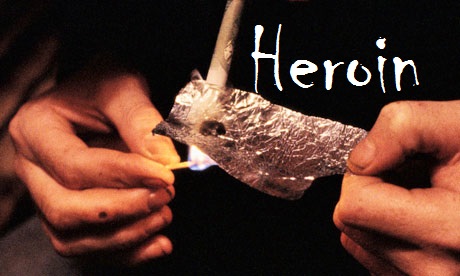 Recent research published by the National Institute of Health has demonstrated that results for drug addiction treatment are greatly improved when treatment is of adequate length. According to NIDA (National Institute on Drug Abuse): “Individuals progress through drug addiction treatment at various rates, so there is no predetermined length of treatment. However, research has shown unequivocally that good outcomes are contingent on adequate treatment length. Generally, for residential or outpatient treatment, participation for less than 90 days is of limited effectiveness, and treatment lasting significantly longer is recommended for maintaining positive outcomes.”
Recent research published by the National Institute of Health has demonstrated that results for drug addiction treatment are greatly improved when treatment is of adequate length. According to NIDA (National Institute on Drug Abuse): “Individuals progress through drug addiction treatment at various rates, so there is no predetermined length of treatment. However, research has shown unequivocally that good outcomes are contingent on adequate treatment length. Generally, for residential or outpatient treatment, participation for less than 90 days is of limited effectiveness, and treatment lasting significantly longer is recommended for maintaining positive outcomes.”
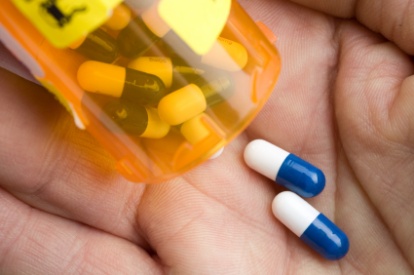 According to a study from NIDA (National Institute on Drug Abuse) which is a branch of the NIH (National Institute of Health) 50% of all heroin addiction begins as prescription drug abuse: “pain killers” like Oxycontin, Oxycodone, Percoset, Lortabs and Vicadin, to name just a few. Prescription Overdoses also eclipsed the Overdose deaths from Heroin and Cocaine combined. Thus, not only are direct deaths from prescription drug abuse massive but the second biggest source of drug overdose deaths, heroin, owes 50% of its addicts to prescription drugs. Thus it is clear that drug overdose deaths attributable to prescription drugs are clearly the vast majority of the 43,000 drug abuse overdose deaths that occurred last year here in the United States.
According to a study from NIDA (National Institute on Drug Abuse) which is a branch of the NIH (National Institute of Health) 50% of all heroin addiction begins as prescription drug abuse: “pain killers” like Oxycontin, Oxycodone, Percoset, Lortabs and Vicadin, to name just a few. Prescription Overdoses also eclipsed the Overdose deaths from Heroin and Cocaine combined. Thus, not only are direct deaths from prescription drug abuse massive but the second biggest source of drug overdose deaths, heroin, owes 50% of its addicts to prescription drugs. Thus it is clear that drug overdose deaths attributable to prescription drugs are clearly the vast majority of the 43,000 drug abuse overdose deaths that occurred last year here in the United States. Before I go on, let me back up a bit. You see, I had been on about a week long meth and heroin binge with some so called friends. In the world of getting high, friends are hard to come by so you take what you can get. One guy, I’ll call him Bubba, let me stay at his parents’ house when we decided that some unknown forces were stalking my house and posed immediate personal danger. I stayed there for four days, didn’t sleep, barely ate and did enough speed and tar to fill Marianas Trench. Afterwards, I let Bubba drive us back to my place in my car.
Before I go on, let me back up a bit. You see, I had been on about a week long meth and heroin binge with some so called friends. In the world of getting high, friends are hard to come by so you take what you can get. One guy, I’ll call him Bubba, let me stay at his parents’ house when we decided that some unknown forces were stalking my house and posed immediate personal danger. I stayed there for four days, didn’t sleep, barely ate and did enough speed and tar to fill Marianas Trench. Afterwards, I let Bubba drive us back to my place in my car.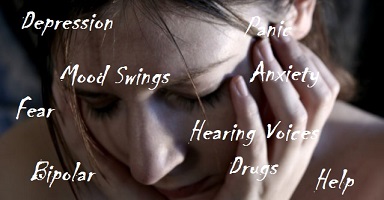 The terms Dual Diagnosis and Co-Occurring Disorder are used to describe situations where people have both a substance abuse problem and a mental disorder. While the relationship between the two can be complex, they are often considered in the following ways:
The terms Dual Diagnosis and Co-Occurring Disorder are used to describe situations where people have both a substance abuse problem and a mental disorder. While the relationship between the two can be complex, they are often considered in the following ways: The first morning of the event I was driving my 95 BMW to the convention center when, out of nowhere, I was rear ended by another car. I was knocked unconscious and my car was totaled. Apparently, EMTs took me to the hospital where I was later picked up by my mother.
The first morning of the event I was driving my 95 BMW to the convention center when, out of nowhere, I was rear ended by another car. I was knocked unconscious and my car was totaled. Apparently, EMTs took me to the hospital where I was later picked up by my mother. If you watch TV at all you have seen the ads for the myriad new medications that are constantly being marketed by the pharmaceutical industry. You may have also seen these ads in some form or another on the Internet or in your email inbox. For whatever ailments people have there is always a new drug that is being advertised as the “be all, end all” cure.
If you watch TV at all you have seen the ads for the myriad new medications that are constantly being marketed by the pharmaceutical industry. You may have also seen these ads in some form or another on the Internet or in your email inbox. For whatever ailments people have there is always a new drug that is being advertised as the “be all, end all” cure.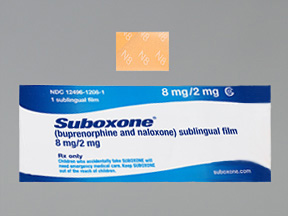



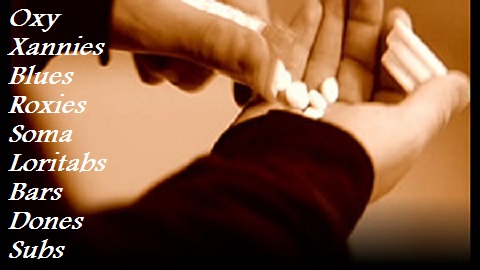 Millions of Americans are dependent on prescription drugs. Many of these addicts are average citizens, with no prior history of drug abuse. They became “hooked” after first using the drugs for legitimate medical reasons. Now, having escalated their drug usage, they cannot stop. The destructive course of addiction rips at the thread of family fabric.
Millions of Americans are dependent on prescription drugs. Many of these addicts are average citizens, with no prior history of drug abuse. They became “hooked” after first using the drugs for legitimate medical reasons. Now, having escalated their drug usage, they cannot stop. The destructive course of addiction rips at the thread of family fabric.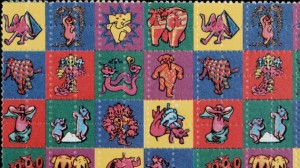 LSD, commonly referred to as “acid,” is sold on the street in tablets, capsules, and, occasionally, liquid form. It is odorless, colorless, and has a slightly bitter taste. LSD is most commonly taken by mouth. Often LSD is added to absorbent paper, such as blotter paper, and divided into small decorated squares, with each square representing one dose.
LSD, commonly referred to as “acid,” is sold on the street in tablets, capsules, and, occasionally, liquid form. It is odorless, colorless, and has a slightly bitter taste. LSD is most commonly taken by mouth. Often LSD is added to absorbent paper, such as blotter paper, and divided into small decorated squares, with each square representing one dose.